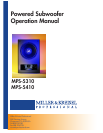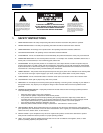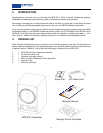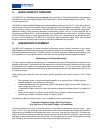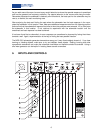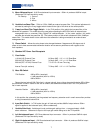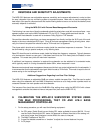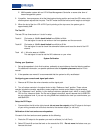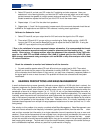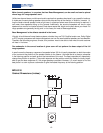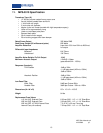
3. Select CD track #1 and set your SPL meter for C weighting and slow response. Have your
assistant sit in the listening position, and hold the SPL meter at armís length and at ear height,
pointed towards the speaker at a slight upward angle and read the SPL. Then using a small flat
bladed screwdriver adjusts the level trim pot of the LFE-4 until the meter reads
4. Repeat steps 1, 2, and 3 for the other front speakers.
5. Repeat step 1, 2 and 3 for the surrounds, however each of the surround channels should be set
at 82dB for film applications and 85dB for DVD software, including music applications.
Calibrate the Subwoofer Level:
1. Select CD track #3, set your output level for 0VU and route the signal to the LFE output.
2. Then select CD track #2. If you are mixing or monitoring for Dolby digital use the +10dB LFE
input on the LFE-4 and use the Bass/Sub trim pot to adjust the level to 95dB SPL. If using the
+0dB LFE input adjust the trim pot to 85dB SPL.
***Due to the variations in in-room response between subwoofers, it is recommended that broad-
band pink noise and an acoustical analyzer be used for placement and level setting of the sub-
woofer. When using a 1/3-octave analyzer, align the response of the subwoofer to the 72dB refer-
ence line for +0dB LFE and 82dB reference line (10dB of in-band gain) for the +10dB LFE input.
M&K strongly recommends using an analyzer such as MLSSA or any other analyzer with at least
12
th
octave resolution.
Check the subwoofer to monitor level balance for all the channels:
1. For each satellite speaker select CD track #3 and set your output level to 0VU. Then select
track #2 and check that the output of the subwoofer is exactly 85dB SPL. The subwoofer output for
all the channels should be the same. If they are not, you may have a frequency response problem in
the signal path for one or more channels. This problem will have to be corrected and the system
recalibrated.
9. HEARING PERCEPTIONS AND BASS MANAGEMENT
In small studios/monitoring rooms (generally defined as rooms less than 12,000 cubic feet in volume), the
frequency response of a speaker system in the region below 100Hz is dominated by the modal response
of the room. Room modes, also known as standing waves, occur in all rooms at frequencies where the
wavelength of sound is an integer fraction (i.e. 1/1, 1/2,1/3,1/4, etc.) of the distance between two walls, or
the distance between the ceiling and floor (this is a slightly over simplified explanation). This means that
invariably, some frequencies are reinforced and some frequencies are canceled, resulting in peaks and
dips in the frequency response at the listening position. These peaks and dips are affected by the relative
position of the speakers to the boundaries in that room. Because of this, it is virtually impossible to get
consistent bass response from multiple full-range speakers located around a room (such as in a 5.1 mon-
itoring setup).
One solution to this problem is to employ a method called Bass Management. Bass Management uses
electronic filters to extract the low frequency information (typically below 80Hz) from the main five chan-
nels and then reroutes that information to a single subwoofer channel (reproduced by one or more sub-
woofers). Since the low frequencies will now originate from a single source (a subwoofer) this source can
be placed in the optimum location for bass reproduction in that room. And, because the main speak-
ers are not required to handle frequencies below 80Hz, they can be reduced in size and easily placed for
best imaging and coverage. The end result is that the overall frequency response of the entire audio sys-
tem is considerable improved, without any sacrifice in performance or imaging.
10



